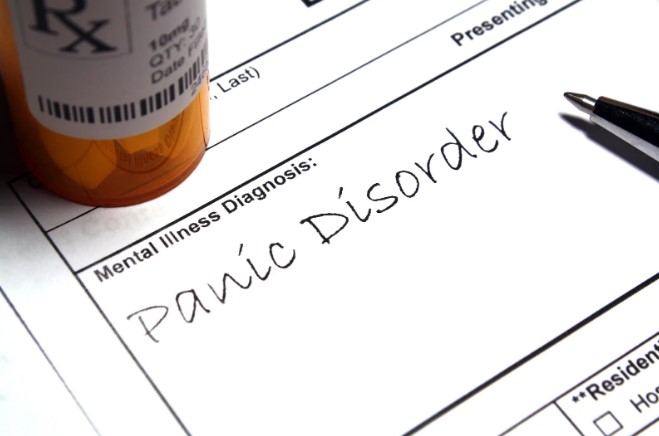Panic disorder affects thousands across Florida, often disrupting daily life and well-being. Accurately identifying panic disorder is essential for starting effective treatment, but many wonder just how much a screening can truly uncover. At the forefront of this question, companies like URP Behavioral Health emphasize the importance of early evaluation—for instance, their test panic disorder tool offers an initial glimpse into possible symptoms and risks, serving as a first step for those uncertain about what they're experiencing. Yet, despite the value of such screenings, it's crucial to understand both their capabilities and their limitations, especially for individuals considering mental health treatment centers in Florida.
The Scope of Panic Disorder Screenings: What Is Revealed
Panic disorder screenings are typically structured as self-report questionnaires or structured interviews, designed to rapidly assess core symptoms. These tools focus on recurring panic attacks, the intensity and duration of physical sensations, and the presence of persistent fears or behavioral changes in response to anxiety. Residents of Florida seeking clarity about their symptoms may find that these screenings highlight key diagnostic features such as sudden onset of terror, palpitations, dizziness, sweating, and avoidance behaviors.
Clinical screenings often incorporate standardized measures, including the Panic Disorder Severity Scale (PDSS) or the Generalized Anxiety Disorder 7-item scale (GAD-7). By evaluating the frequency and severity of panic episodes, these assessments can distinguish panic disorder from everyday stress or isolated anxiety. Screenings also flag when further psychiatric evaluation is advisable, which is critical for those considering admission to a mental health treatment center in Florida.
Importantly, panic disorder screenings can detect patterns of distress that warrant immediate clinical attention. For example, individuals who self-report chronic fear of having another panic attack, or who avoid public spaces because of anxiety, may be identified as high-risk. In these cases, mental health professionals may review screening results and, if appropriate, suggest further evaluation or exploration of available support options.
Screenings also raise awareness of co-occurring symptoms. Many individuals with panic disorder experience overlapping conditions such as depression, agoraphobia, or substance misuse. Although the primary focus is on panic symptoms, well-designed screenings can prompt further investigation into these related concerns—enabling early intervention and holistic care planning.
Key Limitations of Panic Disorder Screenings in Florida
While panic disorder screenings serve as a vital launching point, they are not a substitute for a full diagnostic evaluation. These tools do not deliver a definitive diagnosis. Instead, they indicate the likelihood of a panic disorder based on current symptom profiles. For many people in Florida, especially those with complex mental health histories, a screening may oversimplify their situation or miss nuances that a thorough clinical interview would uncover.
One major limitation is the reliance on self-reporting. Individuals might unintentionally understate or exaggerate symptoms due to stigma, denial, or misunderstanding the questions. This subjectivity can lead to false positives (identifying panic disorder when it’s not present) or false negatives (missing the diagnosis altogether). The issue is especially pertinent in culturally diverse regions like Florida, where language and cultural norms can influence how symptoms are described or perceived.

Screenings also fail to explore the deeper origins or triggers of panic attacks. They typically assess for recent experiences rather than long-term behavioral patterns, trauma history, or medical factors that could mimic anxiety. For example, physical health conditions such as thyroid disorders or heart arrhythmias may produce symptoms that resemble panic attacks. Without a full medical assessment, these crucial distinctions remain unexplored.
Furthermore, panic disorder screenings often do not differentiate between various anxiety disorders with overlapping symptoms—such as social anxiety disorder, phobias, or generalized anxiety disorder. For this reason, individuals may receive broad guidance to seek mental health support without a clear pathway for specialized treatment.
Finally, screenings cannot measure how panic disorder affects daily functioning, relationships, or quality of life. They capture a snapshot in time, not the ongoing impact on academic, occupational, or social spheres. This gap highlights the importance of follow-up with trained professionals and personalized care plans. For those weighing their treatment options at URP Behavioral Health, exploring the URP mental facility in Florida can provide access to comprehensive assessments that move beyond basic screening tools.
Common Misconceptions Clarified
Screening Tools Are Not Standalone Diagnoses
While easy to use and widely accessible, panic disorder screenings should not be mistaken for a clinical verdict. They set the stage for an informed discussion with a mental health provider, not a DIY solution.
Cultural and Age Considerations
Symptoms of panic disorder may manifest differently based on cultural background, age, and individual history. Screening questions cannot accommodate every unique circumstance, making professional follow-up especially important in diverse communities like South Florida.
Comprehensive Care Beyond Screening: Steps Toward Treatment
Recognizing the limitations of screening is vital for pursuing effective care. Once a screening suggests that panic disorder may be present, the next step involves consultation with licensed professionals who can conduct an in-depth evaluation. A robust assessment addresses medical history, psychological factors, family background, and possible co-occurring conditions.
For individuals in the Sunshine State, comprehensive mental health treatment centers offer multidisciplinary teams—psychiatrists, psychologists, counselors, and social workers—who collaborate to develop tailored care plans. These centers frequently provide a blend of therapeutic modalities, including cognitive behavioral therapy (CBT), group support, wellness interventions, and, when appropriate, discussions around medication as part of an individualized plan.
Some individuals may find integrated approaches helpful, particularly when panic disorder overlaps with other conditions such as depression or substance use, though outcomes can vary. A thorough assessment ensures that all contributing factors are addressed, reducing the risk of misdiagnosis or incomplete treatment.
At the treatment-planning stage, patients receive education on what to expect from therapy, how to manage symptoms between sessions, and strategies for long-term recovery. The company URP Behavioral Health details such treatment options on https://urpbehavioralhealth.com/conditions-treated/anxiety-disorders/ which outlines several key pathways to care:
- Comprehensive diagnostic evaluations that consider physical and psychological health
- Individualized treatment plans targeting both panic disorder and co-occurring conditions
- Access to evidence-based therapies and, where applicable, information about medication as one possible component of care
- Ongoing progress monitoring and adjustment of interventions as needed
- Support for families and loved ones to foster a healing environment
Integrating Screening, Diagnosis, and Recovery in Florida's Mental Health Landscape

For Floridians navigating the early steps of panic disorder identification, the best outcomes come from combining efficient screening with professional follow-up and evidence-based care. Screening tools are a valuable resource for raising awareness and motivating individuals to seek help, but they must be grounded in the broader context of clinical evaluation and ongoing support.
Florida's mental health treatment centers bridge the gap between self-assessment and lasting recovery. By offering seamless transitions from initial screening through to diagnosis and personalized intervention, these centers aim to support individuals in working toward greater emotional stability and improved quality of life, though the process and outcomes are unique to each person.
Ultimately, the journey from recognizing symptoms to achieving mental health resilience requires a blend of accessible screenings, expert evaluation, and ongoing collaboration between patients and clinicians.
Summing Up: Informed Choices for Florida Residents
Understanding what panic disorder screenings can and cannot reveal empowers residents of Florida to make informed decisions about mental health care. Early screening is a starting point, not an endpoint—a step toward accurate diagnosis, exploring support options and working toward improved well-being, with professional guidance tailored to individual needs.


